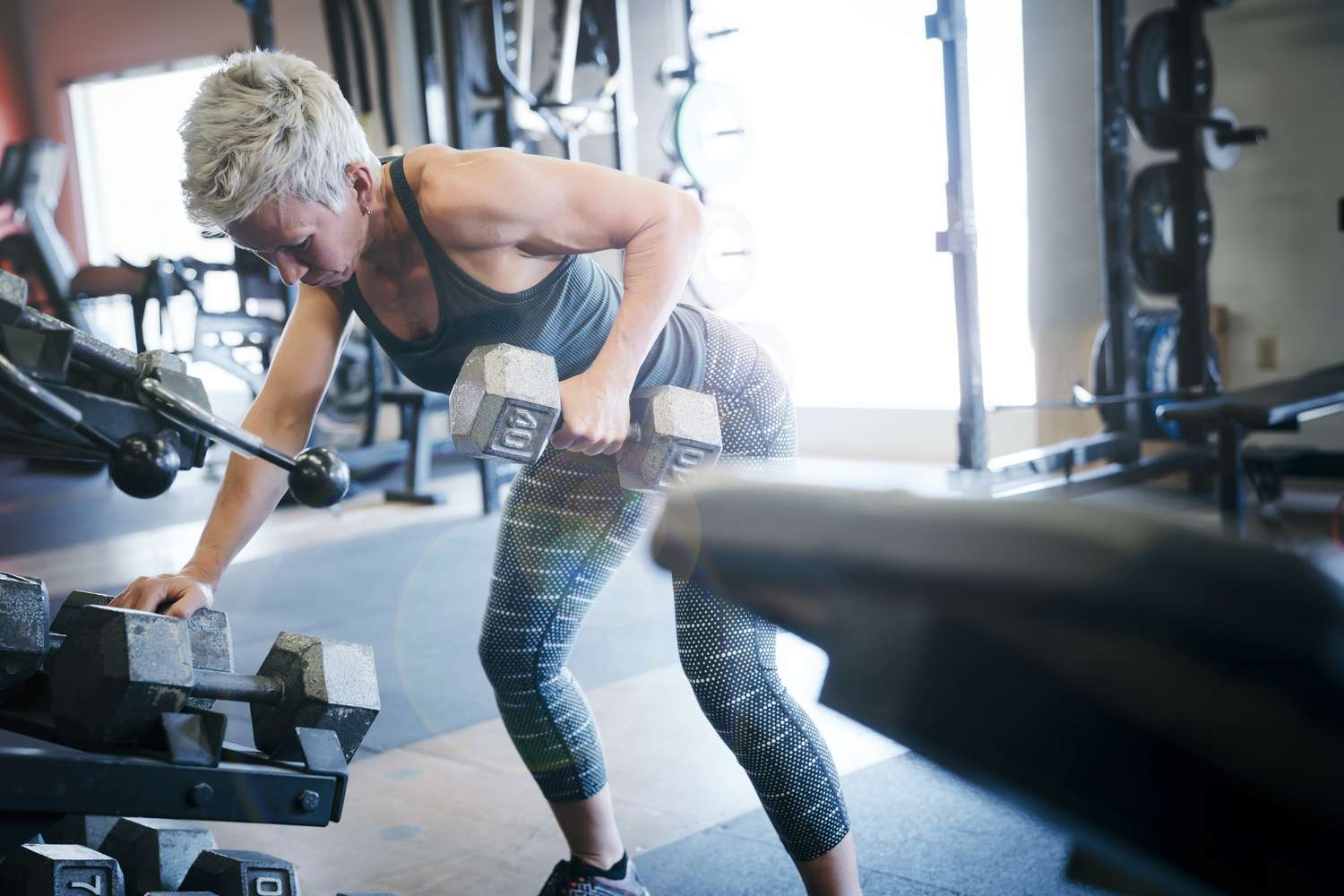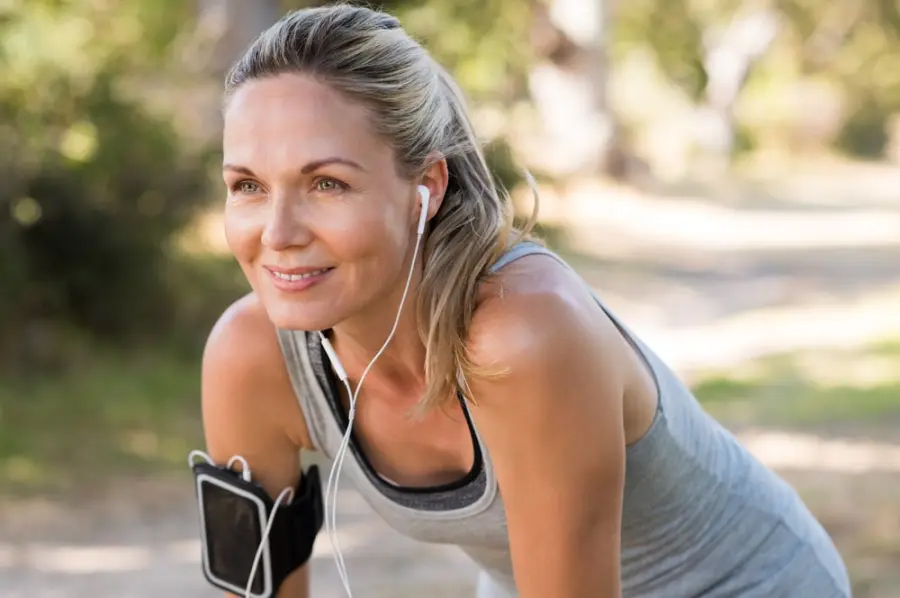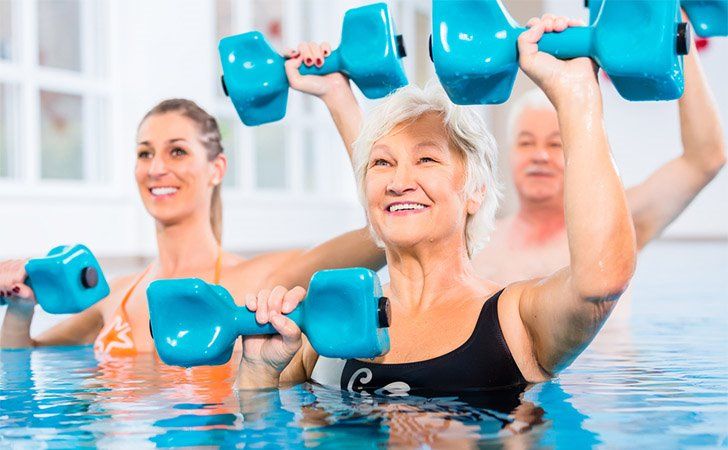At 40, you have to realize that your joints are also 40 years old, and you might need to modify your exercise intensity and routine in keeping with the physical, physiological and hormonal changes. Also, there is a tendency to gain about 10 pounds a decade after age 40, primarily due to loss in muscle mass ( If you gain 10 pounds after 40, the net gain is from adding 15 pounds of fat and losing five pounds of muscle.). To fight this weight gain, the natural reaction is dieting which further leads to loss in muscle mass. Each lost pound of muscle depresses the body’s metabolism by about 40 calories a day. An aerobic routine coupled with strength training, a healthy diet and stretching can replace the lost muscle, get the body’s metabolism back up, and keep weight off permanently. The focus needs to be on weight training and and to avoid dieting.

While you’re weight-train, add new muscle mass and maintain your endurance, you need to be protective of easily injured joints. A problematic knee or tennis elbow can keep an otherwise healthy and active forty-something woman on the sidelines, which can lead to weight gain, insomnia and depression, not to mention loss of flexibility.
Low-impact workouts are recommended for women at forty to allow them to burn a high number of calories, with exercises like biking or swimming. If you are bored out of your exercise routine or have you stopped seeking results. Here are top 10 exercise options to get your metabolism rolling.
1- Walking- It is easy, safe and inexpensive. Walking is an injury-free way for the 40+ to keep fit. It burns calories, and it’s an ideal fat-burning activity. It conditions the heart, improves muscle tone and strength, relieves stress, and can help with back pain, osteoporosis, respiratory problems, diabetes, arthritis, cardiac rehabilitation and a variety of other health problems.

2- Biking- This is a good exercise options for women with osteoarthritis of the knees can engage in stationary cycling by using a high seat adjustment, a low resistance setting, and toe clips.
3-Swimming- for women at 40 swimming will help in strengthening the muscle, tendons and ligaments that supports the joints, and thus improve stability and flexibility. Aim to exercise for only 15 or 20 minutes at a time in the beginning.
4-Low-impact aerobics- This is no jarring, jumping, or knee harming, heavy-duty swiveling, but rather stretching and then sustained exercise. Aerobic conditioning, is the best way to strengthen your heart rate, which will allow you to keep exercising at your full capacity as you age and may protect you from heart disease later on. This can include dancing, aerobic machines, light step aerobics, square dancing- or any other exercise which fits the guideline of always having one foot on the floor.

5-Volleyball- Playing a game of volleyball for 30-45 minutes can add a boost to your heart & lungs and help in reducing the risks of developing coronary heart disease, hypertension, colon cancer and diabetes.
6- Strength training – Without regular workouts, muscles shrink 1% to 2% each year. Muscle loss slows down your metabolism; if you don’t sweat on a regular basis, you’ll probably gain 10 pounds between the ages of 40 and 50, even if your eating habits don’t change.20 minutes of weight training, three times a week is a good start. Resistance training also helps in increasing bone density.
7- Horseback riding – Perceived physical benefits of horse riding includes improved balance, posture, strength, flexibility, stability and even walking. Other personal benefits include improved self-esteem, self-concept and socialization. There is still no data on the frequency or duration of riding that’s needed to gain these results, but it is a recreational and therapeutic activity which can be enjoyed by women of all ages and abilities.

8-Cross-country skiing (rather than downhill or water)- In terms of all-around aerobic benefits, cross-country skiing is the front runner. Using muscles in the shoulders, back, chest, abdomen, buttocks, and legs, cross-country skiers can burn as many as six hundred to nine hundred calories per hour. The kick and glide technique, combined with the poling motion to propel you along, can provide a more complete workout than running or cycling, both of which emphasize lower body muscles.
Using muscles in the shoulders, back, chest, abdomen, buttocks, and legs, cross-country skiers can burn as many as six hundred to nine hundred calories per hour.
If you are forty-five or over or not in good shape, check with your doctor before you begin skiing. Gradually build up the amount of time you spend at it. Otherwise you run the risk of overuse strains (such as tendinitis) of the shoulder, knee, and arm.
Disclaimer
The Content is not intended to be a substitute for professional medical advice, diagnosis, or treatment. Always seek the advice of your physician or other qualified health provider with any questions you may have regarding a medical condition.